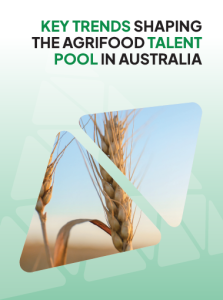Three Steps To Agribusiness Success: Diversify, Specialise and Love
Across Asia, Australia enjoys a clean and green reputation when it comes to produce; so too does New Zealand. However, as an industry, reliance on reputation alone won’t be enough to compete on the world stage. Instead, Australian farmers will need to keep this reputation, look at new ways to get food to market quickly…
Across Asia, Australia enjoys a clean and green reputation when it comes to produce; so too does New Zealand. However, as an industry, reliance on reputation alone won’t be enough to compete on the world stage.
Instead, Australian farmers will need to keep this reputation, look at new ways to get food to market quickly and build close relationships with export partners.
Achieving this is helped by organisations, such as Food & Agribusiness Solutions, that invests in programs and conducts research to examine Australia’s agribusiness and food processing. These events have included such things as innovation centres that help educate farmers and food processors on ways they can increase productivity and competitiveness.
Agribusiness and agrifood middleman squeeze
In 2015, Food & Agribusiness Solutions published the Nous Report, which highlighted an emerging trend where profitability is achieved in niche premium products, or large-scale production. The impact of this trend is an increasing squeeze on the middleman, typically the farmer.
Food & Agribusiness Solutions General Manager, Michael Claessens, says this trend is being seen across many sectors of the industry, and is largely driven by competition from countries that could produce the same food cheaper.
As international trade becomes freer this competition will continue, and will force businesses to either get big or to go niche into a specialised premium product.
Paddock to plate via the farm gate
Coming out of the woodwork is the farmer who takes their produce and processes it into a product that can be sold directly to the consumer. Driving this is a desire to get a better price for their produce and to shift reliance away from a commodity price affected by world supply and demand.
While there is huge potential for Australian farmers to venture into processing, there are barriers to entering into this small-end production due to lack of skills and knowledge.
How a love of beer inspired two barley growers to make malt
Stuart Whytcross and Brad Woolner are two Riverina barley growers who have diversified into the booming Australian craft beer market by building a malt house on their property.
One of the rewarding benefits of adding the malt house, has been their ability to connect the barley grown on their farm, through the malt house and then to craft brewer.
“We get a real kick seeing people enjoy beer that’s been made using our malt,” Whytcross says.
Stuart and Brad work closely with the craft brewer, which they believe gives them an insight into what the consumer expects from their product – something they couldn’t do when supplying commercial brewers. The experience has taught them consumers are increasingly concerned about their food and its origins.
In 2015, the pair used social media, along with craft brewer Batch, to record the growth, harvest and malting of a paddock of Schooner barley. The brewery said their customers were keenly following the progress of the crop.
Financially, Whytcross also says the average price for malt barley is around $250 per ton while for craft malt it is more like $1200 per ton. It’s a significant mark-up, but to be able to capture the profit, production would need to be significantly larger than what the pair is doing now.
Relationships are the key to agrifood producer success
Part of the barley growers’ investment has been the time they’ve spent in building relationships with craft brewers to create a market for their product.
Whytcross says he was fortunate because of his brewing background and for the shared love of craft beer that he had with the brewers. The brewers were also interested in knowing the story behind the production of the barley.
It is these close relationships Claessens believes will make Australia competitive on the world market.
“Australia traditionally hasn’t developed the strong relationships between production and consumer internationally,” he says.
These relationships take time to develop, and in Asia this can take many dinners and bottles of wines to build.
“Cultural awareness is vital for success in the export market and can sometimes involve building friendships before business arrangements can be entered into.”
Spread risk to succeed
One other incentive to entice farmers into food processing for niche markets is a move away from reliance on single customers. Traditionally, farmers sell to large processors who can often be their sole buyer. This is a risky strategy, Claessens believes, as large processors and distributors can change their contract terms or cancel contracts at a moments notice, to the farmer’s detriment. Having a number of smaller buyers who provide a safety net should one cancel or change their contract can mitigate this.
Up-skilling to understand these risks or to learn about food processing first hand by visiting processing plants is a good way for farmers to understand what’s required before investing or entering into partnerships with processors.
For more information about the key trends and talent landscape in the AgriFood industry, download our free report.
The Latest Updates
Let’s look at the current trends in job demand and talent availability in the agriculture and agribusiness sector in Australia over the second half of 2023 and the first quarter of 2024. There was a weakening of job demand in this sector but a slight improvement in candidate availability and job interest during this period….
In times past, people’s working lives often played out over many years at one company, but now the world has vastly changed. These days it is common to shift between jobs and organisations, but this practice raises questions as to what is today considered the Goldilocks time to spend in a job? How often do…
Employee retention matters. Organisational issues such as training time and investment, lost knowledge, mourning, insecure co-workers and a costly candidate search aside; failing to retain a key employee is costly. Various estimates suggest that losing a middle manager costs an organisation up to 100 percent of their salary. The loss of a senior executive is…











